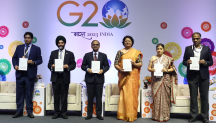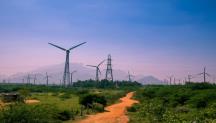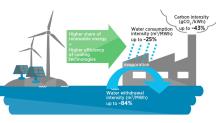

Renewable Energy Can Fuel India’s Economic Growth, Says IRENA Director-General
Newsletter
Scaling up renewable energy in India is the topic of the day as government officials, investors, and energy industry leaders gather in New Delhi, India to attend RE-Invest, the First Renewable Energy Global Investors’ Meet & Expo.
IRENA Director-General Adnan Z. Amin, delivered today’s keynote address, stressing the importance of renewable energy in sustainably meeting India’s growing energy needs. India is the world’s third largest economy and the fourth largest energy consumer. By 2030, India will surpass China as the world’s most populous nation, demanding more than twice as much energy as is needed today.
“India’s increasing demand for energy can no longer be met through traditional energy sources alone. Renewable energy must be a major part of the solution because it can meet the demand cheaply and sustainably while at the same time achieving broader socio-economic objectives.” Mr. Amin
According to IRENA’s new report Renewable Power Generation Costs in 2014, the cost of generating power from renewable energy sources has reached parity or dropped below the cost of fossil fuels for many technologies in many parts of the world. Biomass, hydropower, geothermal, wind and solar are all competitive with or cheaper than coal, oil and gas-fired power stations. This holds true even without financial support and despite falling oil prices. Solar photovoltaic (PV) is leading the cost decline, with solar PV module costs falling more than 75 per cent since the end of 2009 and the cost of electricity from utility-scale solar PV falling 50 per cent since 2010.
India has some of the lowest development costs for renewable technologies worldwide. Average installed costs for biomass, hydropower and onshore wind in India are between USD 1,240 and 1,390/kW. Average installed costs for large-scale solar PV have also fallen dramatically in India to USD 1,670/kW. In Europe by comparison, average total installed wind costs are USD 2,000/kW and average installed costs for large-scale solar PV are USD 2,330/kW. India’s significant volumes of agricultural residues (e.g. straw and sugarcane bagasse) also provide some of the lowest cost electricity in the world with an average cost of USD 0.04/kWh.
“Falling prices are driving renewable energy investment in India, which rose 13 per cent last year and is expected to surpass 10 billion dollars in 2015. Adoption of increasingly cost-effective renewables holds the genuine promise of a new age of socio-economic development, powered by clean, increasingly decentralised, and sustainable energy. The opportunity for India is tremendous.” - Mr. Amin
In addition to being increasingly economical, Mr. Amin stressed that renewable energy provides strong social and environmental benefits, simultaneously improving public health and security, creating jobs, reducing air pollution, boosting GDP and improving the balance of trade. The renewable energy industry now employs 6.5 million people globally, a number IRENA estimates could top 16 million by 2030. India is the world’s fourth largest employer in the sector, with 391,000 renewable energy jobs.
“India has one of the most ambitious renewable energy programmes in the world and developments in India will strongly influence the trajectory of the energy transformation worldwide. The signs of progress so far are encouraging, and the attendance here today is testament to the recognition that renewables are a fantastic investment opportunity.” - Mr. Amin




